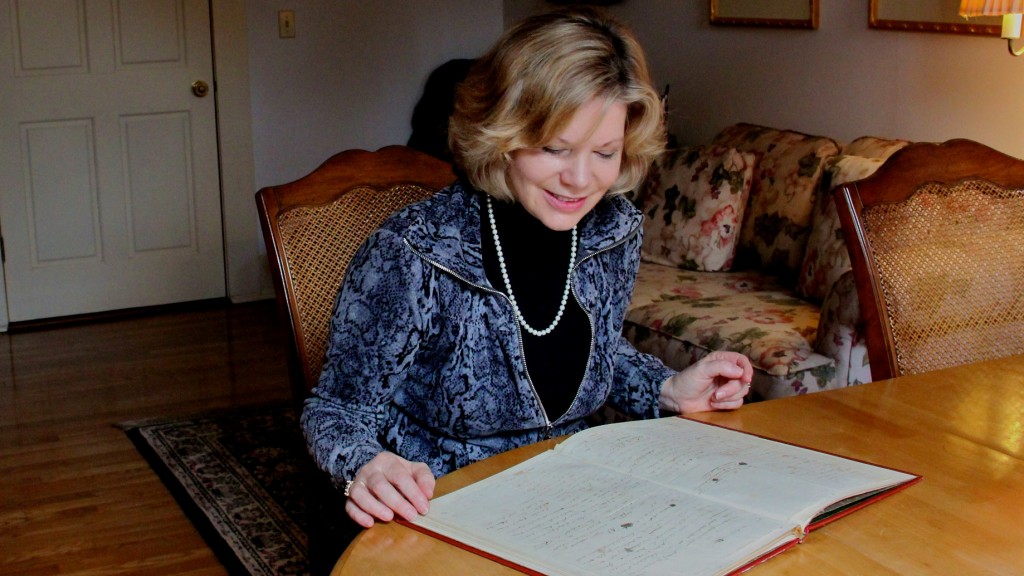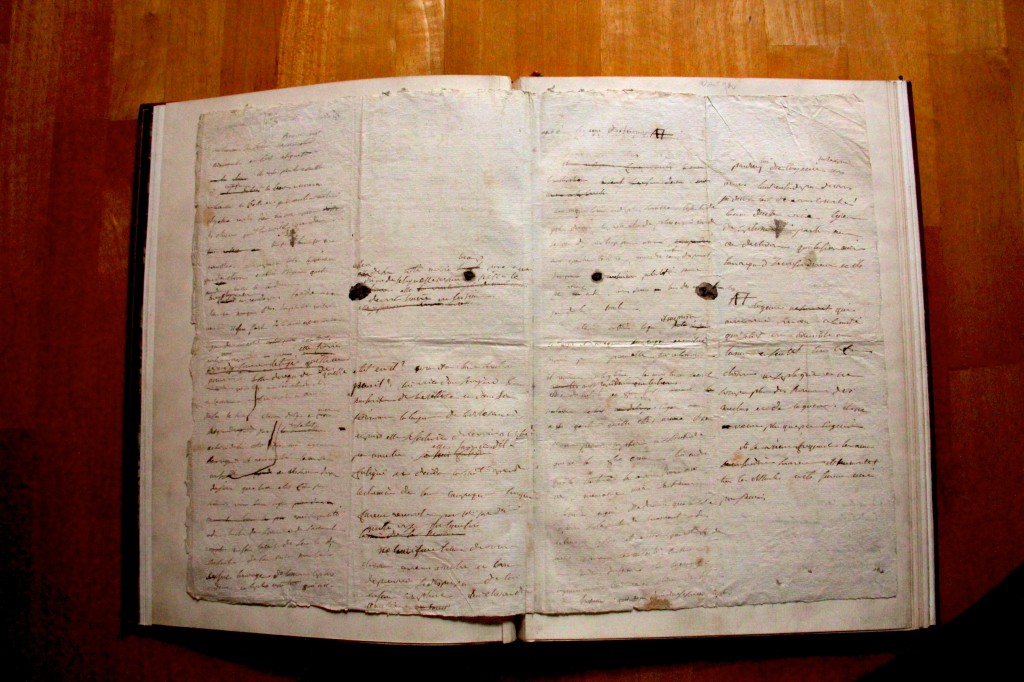 For three months I’ve neglected this blog while I concentrated on my novel, usually working on it eight to twelve hours a day. Now the story is complete start to finish, and has been through several drafts. I’m in the process of getting critiques from my writing group and other expert readers.
For three months I’ve neglected this blog while I concentrated on my novel, usually working on it eight to twelve hours a day. Now the story is complete start to finish, and has been through several drafts. I’m in the process of getting critiques from my writing group and other expert readers.
Earlier this spring, I received special inspiration during a visit with Dr. David Karpeles who owns the world’s largest private collection of historical documents. Dr. Karpeles and his wife, Marsha, maintain twelve Karpeles Manuscript Museums around the country where they share their incredible documents and artifacts with the public. Among those documents are four pages of prose young Napoleon Bonaparte drafted in 1795. I’m not quite ready to publish details about my novel, but this document is essential to my plot.
 These precious pages, written in Napoleon’s hand, are not on display in any museum. Dr. Karpeles generously invited me to view them in his home in Santa Barbara, California. You can judge from my face in the photo how thrilled I was.
These precious pages, written in Napoleon’s hand, are not on display in any museum. Dr. Karpeles generously invited me to view them in his home in Santa Barbara, California. You can judge from my face in the photo how thrilled I was.

Fascinating. I look forward to hearing more about your novel.
John
Thanks, John. I’ve enjoyed looking at your website.
In Nov. 2012 I made a trip in Poland about Napoleon.
I know that N. has written in his youth only one book.
It is about 22 pages.
That pages were divided all over the world.
In a place called Kórnik in Le Chateau is a departement of the National Museum of Poznan.
In the library is the original script of this book called Clisson et Eugénie.
As a pity I could not see it, because it was locked in the safe during a transformation of this little museum.
Look at on of my website on http://www.roelkvos.nl and press on Napoleon in Poland.
Choose Towns and then Kórnik.
You will see what I mean.
Is this your object now?
Greatings and success, I am waiting for your book!
Roel Vos
Apeldoorn, The Netherlands.
How wonderful! Yes, the Karpeles manuscript that I saw in Santa Barbara, CA are pages that were separated from the Kornik manuscript. Several years ago, the curators in Kornik kindly sent me digital copies of the pages they have. I was thrilled to see the photo of the Kornik Library on your site. And I see you, too, made the trip to St Helena. Please keep in touch!
Margaret
I agree, he was quick to forgive betrayal. Although he perhaps tacitly admired them for their ability to do damage to him, he obviously thought Talleyrand and Fouche were more valuable to him in government than in prison, or dead for that matter. So, there was a political reason behind this.
As for the Emperor only eating plain food on St Helena, that’s a nonsense. Napoleon has at least a moral case of maltreatment against the British government: Lord Bathurst sent new rules through to Sir Hudson Lowe who implemented them without reason; Wellington, amongst others, thought him a fool. There again, Napoleon would not subject himself to the indignity of being accompanied by or spied upon by English officers or orderlies. Therefore increasingly he shut himself away and in the end he must have died of boredom and/or despair. Well, actually stomach cancer, like his father, but it is his reduced circumstances I believe which led Napoleon to an early grave, helped along by European and most notably British intransigence…
Brian, I agree with you on all points, with one small exception. While Hudson Lowe and the British government did indeed keep Napoleon and his entourage in straitened circumstances (prompting him at one point to sell his silver plate), Napoleon himself had a life-long habit of eating rather plain food, drinking watered wine, and spending little time over his meals. I wholeheartedly agree that he partly died of boredom.
Thanks for you comment.
Margaret
Pingback: FINDING NAPOLEON - Margaret Rodenberg